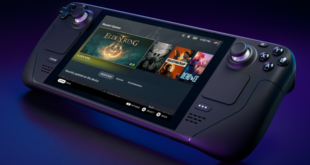Valve is aiming to raise the standards of in-game animation to the point where paralanguage – particularly sign language – can be effectively simulated.
The revelation emerged in a recently uploaded YouTube video, which showed Valve’s Managing Director Gabe Newell consulting a selection of deaf game fans in what appears to be a meeting room in the firm’s Washington-based studio.
Newell was canvassing the group on a range of topics, from their experiences with hearing difficulties, to their own communicative habits, to common sign-language traits.
“Some of these questions are the result of us wanting to have deaf characters in our game,” said Newell, who heavily implied that game was in fact going to be a Half Life game.
At one stage he asked the group if they used their faces as “an information channel”, particularly when communicating to other deaf people, to which one member of the group replied that facial movement was “part of the grammar” of sign language.
Newell said that “as someone who tells stories, I’m trying to understand the subjective experience of the hearing impaired, because the truth of that needs to come out in the character.”
Early in August Develop reported that Valve is set to partner with a ‘facial expression modeling’ firm Dimensional Imaging to create games using cutting-edge animation tech.
Valve’s senior animator Bay Raitt – who built Gollum’s facial system for The Lord of the Rings trilogy – had welcomed the deal.
“Running pre-release tests of Dimensional Imaging’s new expression capture system at Valve has shown great promise for reducing the time needed to create next generation character animation,” he said at the time.
Raitt had in fact attended the meeting with the hearing-impaired group, introduced by Newel as “someone who’s done a lot of research in facia animation”.
Newell asked Raitt if he was struck by anything watching the group communicate, to which Raitt replied that the group tended to be “very aware” of what their faces and bodies were communicating.
Prior to this discussion, Newell also asked the group how games could be better suited for the hearing impaired, which returned the immediately popular idea that players should be able to display hand-signs via webcams.
The date of the video is currently unknown, though another video of people using sign-language in Valve’s offices was uploaded as far back as eight months ago.
The videos in question have had their embedding disabled by request. They can be found through the following links.

 MCV/DEVELOP News, events, research and jobs from the games industry
MCV/DEVELOP News, events, research and jobs from the games industry



